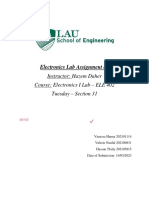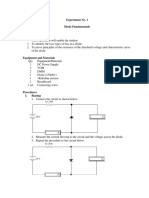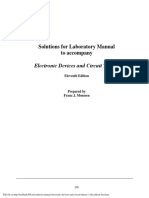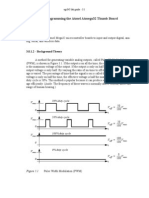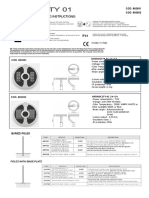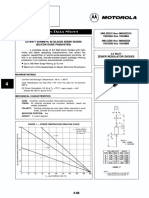0% found this document useful (0 votes)
20 views5 pagesExperiment Name
The document outlines an experiment on the I-V characteristics of diodes, detailing the objectives, theory, and equipment used. It explains the behavior of diodes under forward and reverse bias conditions, presents experimental data, and discusses the results and conclusions drawn from the observations. The experiment demonstrates the exponential nature of the current increase after a certain voltage threshold is reached.
Uploaded by
towhidevan24Copyright
© © All Rights Reserved
We take content rights seriously. If you suspect this is your content, claim it here.
Available Formats
Download as DOCX, PDF, TXT or read online on Scribd
0% found this document useful (0 votes)
20 views5 pagesExperiment Name
The document outlines an experiment on the I-V characteristics of diodes, detailing the objectives, theory, and equipment used. It explains the behavior of diodes under forward and reverse bias conditions, presents experimental data, and discusses the results and conclusions drawn from the observations. The experiment demonstrates the exponential nature of the current increase after a certain voltage threshold is reached.
Uploaded by
towhidevan24Copyright
© © All Rights Reserved
We take content rights seriously. If you suspect this is your content, claim it here.
Available Formats
Download as DOCX, PDF, TXT or read online on Scribd
/ 5








